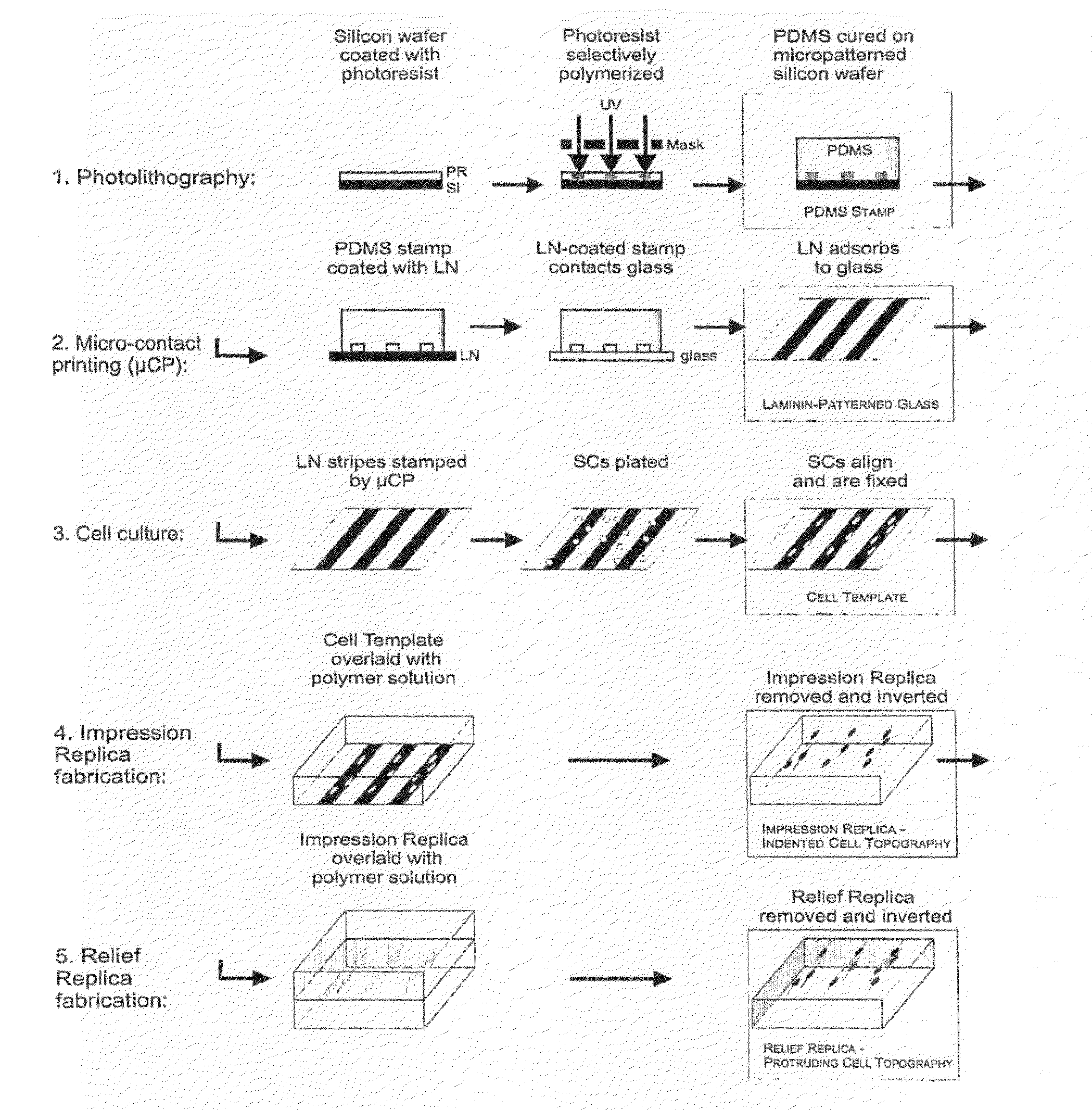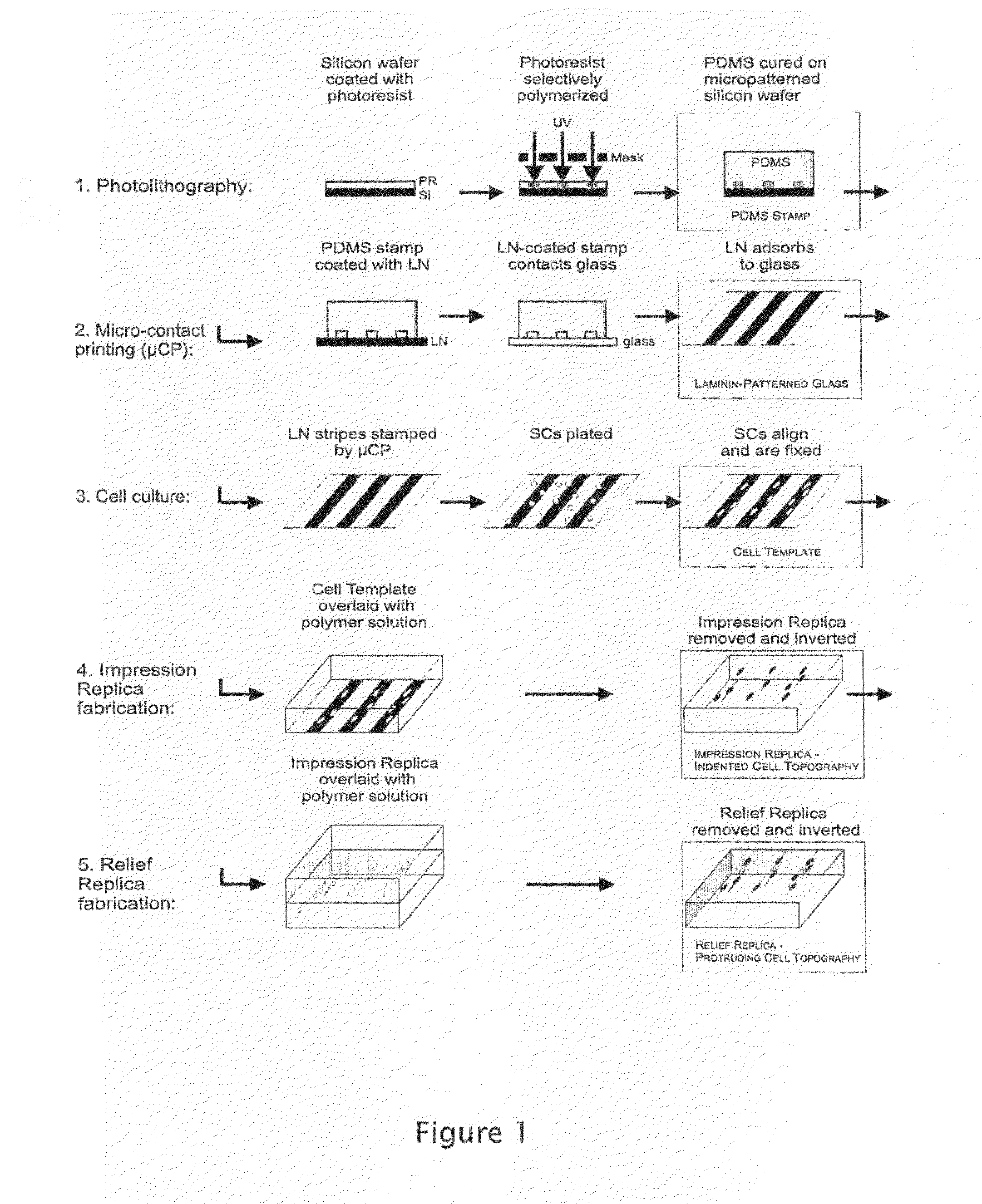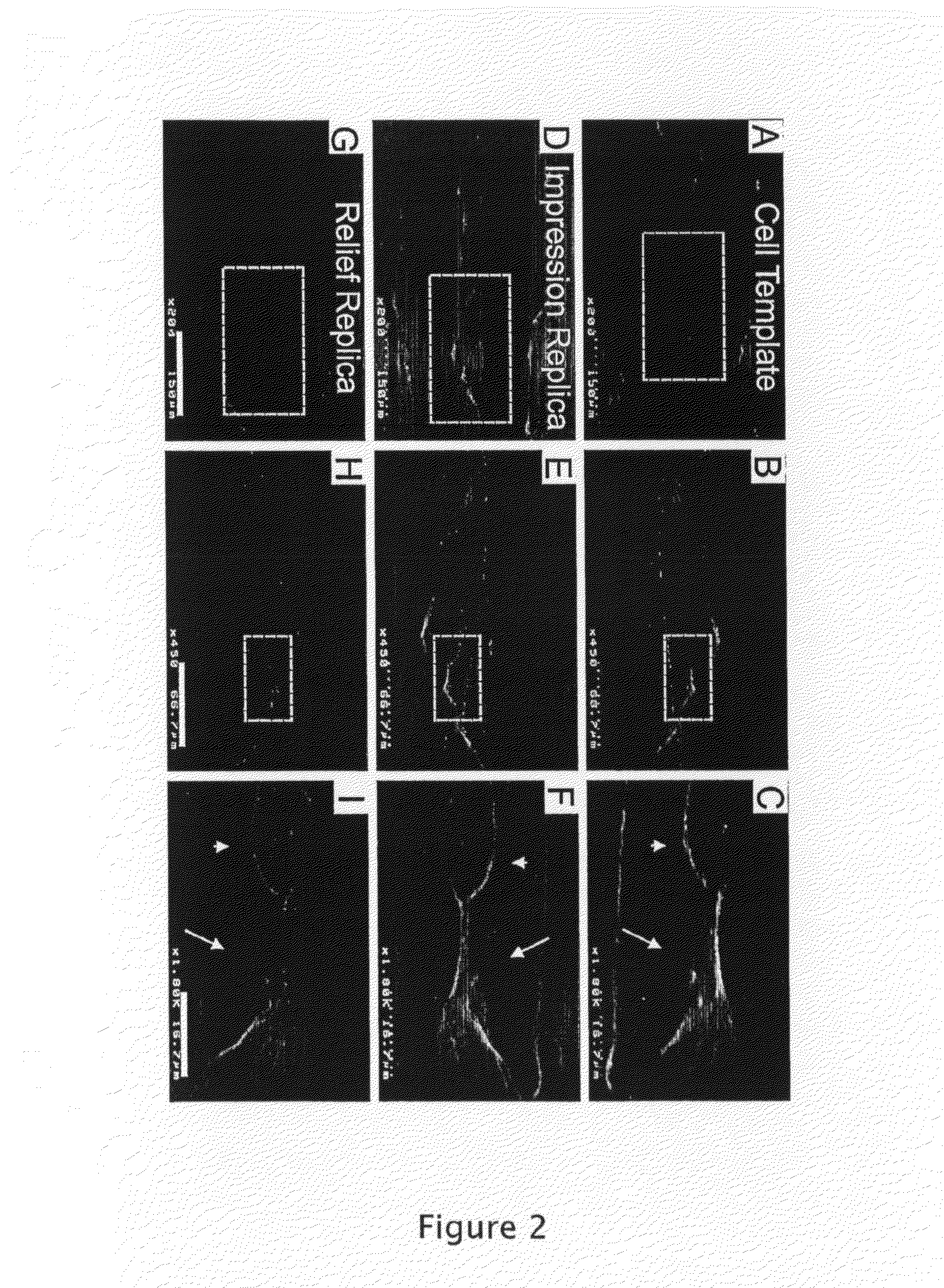Topographical Templating of Polymeric Materials Using Cellular Morphology
a polymeric material and morphology technology, applied in the field of topographical templating of polymeric materials and substrates, can solve problems such as not being the ideal design for such structures, and achieve the effects of increasing cellular adhesion and integration, and promoting cell adhesion
- Summary
- Abstract
- Description
- Claims
- Application Information
AI Technical Summary
Benefits of technology
Problems solved by technology
Method used
Image
Examples
example 1
Preparation of Cell-Templated Substrates
[0066](i) Template Cell Culture Alignment
[0067]Aligned cell cultures, for example Schwann cell cultures, are prepared by micro-stamping laminin in a striped pattern onto a glass coverslip, then culturing Schwann cells on the micropatterned coverslip. For micro-stamping, a grooved PDMS stamp is prepared as described in Goldner et al. (2005). Briefly, the pattern is designed in AutoCAD LT 2004 (Autodesk Corp.) and printed at 10,000 dpi onto a mylar mask. Standard photolithographic techniques are used to transfer the pattern onto Si wafers (Silicon Sense, Inc.) spin-coated with a 50 μm layer of negative tone Nano SU-8 50 photoresist (Microtech Corp.), resulting in repetitive grooves with 60 μm groove, width, 60 μm plateau width, and 50 μm groove depth. Finished features are silaned to prevent adhesion during subsequent casting.
[0068](ii) Polymer Stamp Manufacture
[0069]Sylgard 184 PDMS Elastomer base is mixed with Sylgard 184 PDSM curing agent at ...
example 2
Fabrication of Patterned Molds from Cellular Template
[0075](i) Fabrication of PDSM Molds
[0076]PDMS is prepared using Sylgard®184 from Dow Corning. Elastomer is combined with curing agent at a ratio of 10:1 elastomer base:curing agent and mixed.
[0077]De-gassed PDMS is poured onto the fixed Schwann cells to form a layer 1-3 mm, de-gassed again for approximately 20 minutes, and cured on a hotplate at 95° C. for 1 hour. After removing from the hotplate, PDMS is peeled off. This film substrate (PDMS1) contains indented regions that replicate the inverse of the cell morphology. To generate a film substrate that contains protruding regions that replicate the cell morphology (PDMS2), fresh PDMS is prepared, poured onto the PDMS1, and removed as described above. Of note, PDSM1 remains intact following its use as a template and it can be re-used either as a template for additional PDSM2 samples or for future experiments.
[0078](ii) Fabrication of PU molds
[0079]Polyurethane (PU) is prepared usi...
example 3
In Vitro Stimulation of Nerve Growth
[0080]Cell cultures are incubated at 37° C. and 5% CO2 in a humidified environment. For culture on the cell templated substrates, cells are initially plated at specified densities onto the substrates in 100 μl of appropriate plating medium. After cells adhere to substrates for 3 h, 3 ml of appropriate base culture media are added as described in Example 1. DRG are grown in “neuronal media”, which is base media supplemented with 50 ng / ml Nerve Growth Factor (NGF).
[0081]The analysis of guided and stimulated cell growth employing the PDMS patterned molds from the cellular templates can be carried out using the same techniques, materials and methods described in detail in Goldner, et al, Biomaterials 27 (2006) 460-472.
[0082](i) Motion Tracking Analysis of DRG Cells
[0083]Two aligned SC PDMS1 and two aligned SC PDSM2 cell templated films are coated with PLL / LN for 1 h using standard methods. A flat film of PDMS was used as a control and likewise coated....
PUM
| Property | Measurement | Unit |
|---|---|---|
| thick | aaaaa | aaaaa |
| thick | aaaaa | aaaaa |
| width | aaaaa | aaaaa |
Abstract
Description
Claims
Application Information
 Login to View More
Login to View More - R&D
- Intellectual Property
- Life Sciences
- Materials
- Tech Scout
- Unparalleled Data Quality
- Higher Quality Content
- 60% Fewer Hallucinations
Browse by: Latest US Patents, China's latest patents, Technical Efficacy Thesaurus, Application Domain, Technology Topic, Popular Technical Reports.
© 2025 PatSnap. All rights reserved.Legal|Privacy policy|Modern Slavery Act Transparency Statement|Sitemap|About US| Contact US: help@patsnap.com



